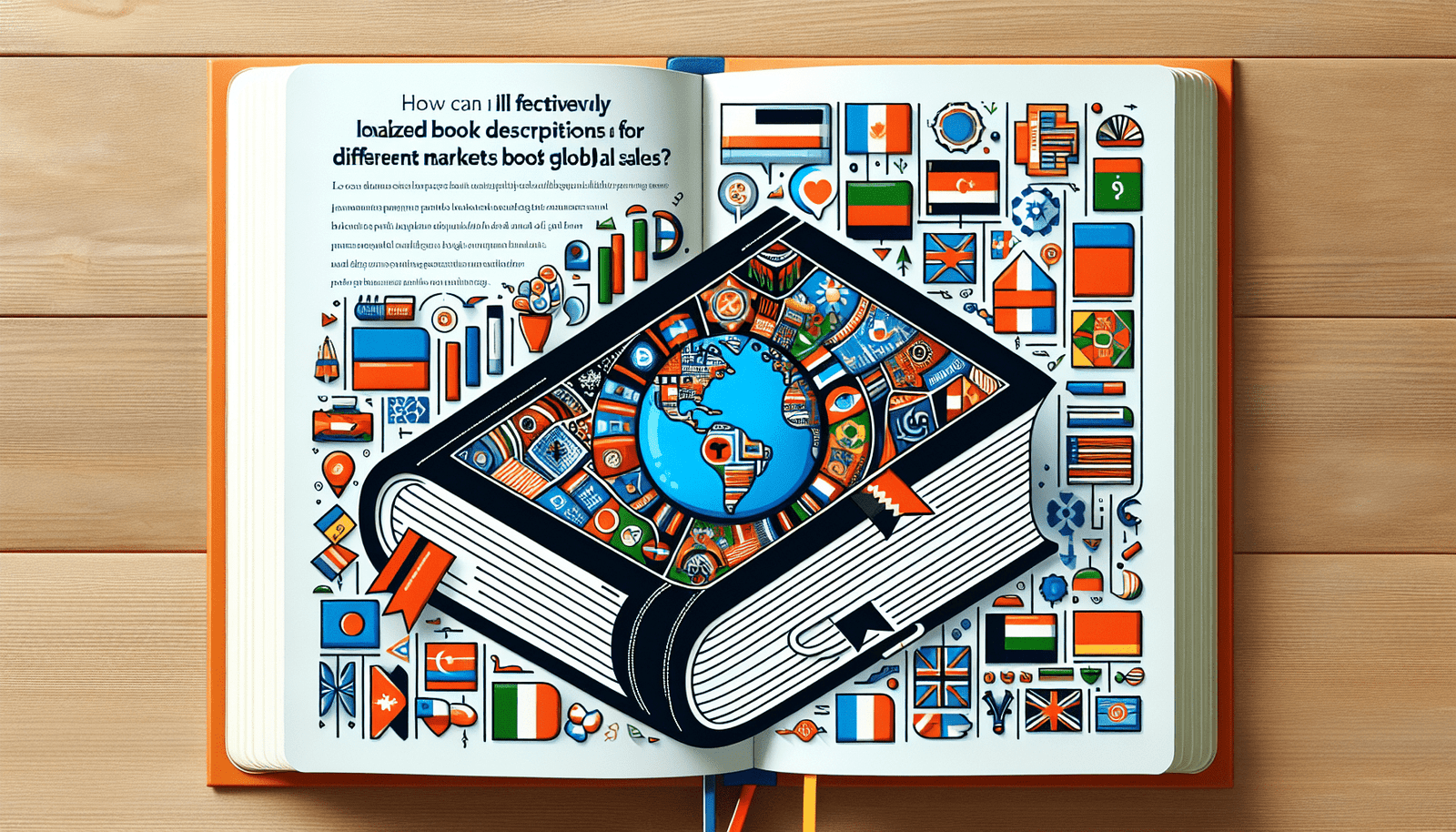Are you ready to take your book to a global audience and boost your sales? In “How Can You Effectively Localize Book Descriptions for Different Markets to Boost Global Sales?”, you’ll discover the importance of tailoring your book descriptions to resonate with readers from diverse cultural backgrounds. By understanding cultural nuances, language preferences, and regional trends, you can create compelling descriptions that connect with international audiences. Get ready to see the world fall in love with your stories and watch your global sales flourish! Have you ever wondered how you can take your book’s sales to the next level by reaching readers around the globe? If you’re an author or a publisher aiming to boost your global sales, localizing your book descriptions for different markets might just be the golden key you’ve been searching for.
Introduction to Localizing Book Descriptions
Book descriptions play a crucial role in enticing potential readers to purchase a book. They are, after all, your first pitch—a promising glimpse into the fascinating world you’ve created. Localizing book descriptions means adapting these summaries to resonate better with audiences in various regions, not just translating the text. When done correctly, it can significantly enhance your book’s appeal across different cultures and languages.
Why is Localization Important?
Localization isn’t merely translating; it’s transforming your message to suit the cultural preferences, idioms, and sensibilities of your target audience. People are more likely to buy and enjoy a book that feels personally relevant and culturally resonant to them. Here’s why it’s crucial:
- Relevance: Readers relate more to content that reflects their cultural context.
- Engagement: Capturing local nuances can make your description more engaging.
- Trust: Localized content builds trust as it feels native rather than foreign.
- Sales: A well-localized description has a better chance of converting curious browsers into buyers.
The Steps to Localize Book Descriptions Effectively
Step 1: Understand Your Target Market
Start by researching your target market. Understand their language, culture, idioms, popular genres, and reading habits. Knowing your audience’s preferences will help you craft descriptions that catch their attention.
- Demographics: Age, gender, education, and income.
- Cultural Nuances: Local traditions, holidays, and slang.
- Preferred Genres: What types of books are trending in their region?
Step 2: Transliteration vs. Translation
While translation is the familiar process of converting text from one language to another, transliteration involves converting text to a different alphabet but maintaining the phonetic characteristics. Choose the most appropriate method based on your market’s language and reading practices.
| Aspect | Translation | Transliteration |
|---|---|---|
| Objective | Convert meaning | Convert sounds |
| Usage | Different languages | Phonetically unique scripts |
| Example | Torta (cake) -> Cake | Torta (cake) -> Торта (Torta, Russian) |
Step 3: Culturalizing Content
Culturalizing content means tweaking aspects of your descriptions to better align with local customs and sensibilities. This can include references to local events, modifying names to better suit local tastes, and removing or replacing elements that may not resonate well with the audience.
Step 4: Focus on Keywords
Keywords are critical in search engine optimization (SEO) and can significantly enhance your book’s visibility online. Use region-specific keywords to help your book appear in local searches.
Example:
- US market: “Mystery thriller” might be a common search term.
- Spanish market: “Novela de misterio”
Step 5: Iterate and Optimize
Test different versions of your book descriptions to see which one performs best. Pay attention to reader feedback and sales data to optimize your description continuously.
Practical Tips for Localizing Book Descriptions
Embrace Linguistic Diversity
Each language has its unique way of structuring sentences, conveying emotions, and presenting ideas. Adjust your book description to sound natural in the target language.
Example in Spanish:
Original: “A thrilling tale of love and betrayal.” Localized: “Un emocionante relato de amor y traición.”
Be Mindful of Cultural Sensitivities
Certain phrases or themes might not translate well culturally. Ensure your description is free from cultural faux pas that could alienate your audience.
Use Professional Translation Services
While online translation tools can help with a basic understanding, they often lack the nuance that professional translators provide. Investing in a professional service can save you from potential embarrassment and ensure your description does its job effectively.
Adapt Marketing Tone
Marketing tones vary significantly across cultures. A casual, friendly tone might be appreciated in some cultures, while a formal, respectful tone might be more appropriate in others.
Examples of Localized Book Descriptions
English to Japanese Localization
Original (English): “Join detective Jane in a thrilling mystery that tests her limits.”
Localized (Japanese): “探偵ジェーンと共に限界に挑むスリリングなミステリーに参加しよう。”
English to German Localization
Original (English): “A heartwarming story of friendship and resilience.”
Localized (German): “Eine herzergreifende Geschichte von Freundschaft und Widerstandsfähigkeit.”
Common Challenges in Localizing Book Descriptions
Literal Translation Pitfalls
Literal translations can sometimes result in awkward or confusing sentences. Always prioritize meaning and readability over direct translation.
Cultural Misunderstandings
Misunderstandings can occur if you’re not familiar with cultural subtleties. Collaborate with native speakers or cultural consultants to avoid this.
Maintaining SEO
While localizing, ensure you’re not losing key SEO terms that could impact your book’s discoverability.
Budget Constraints
Professional localization services can be pricey. If budget is a concern, prioritize regions where you expect the highest returns on investment.
Final Thoughts
Localizing your book descriptions is an investment in your book’s global success. It requires a keen understanding of your target markets, cultural sensitivities, and the nuanced differences between translation and localization. By focusing on these elements, you can create book descriptions that are not only culturally resonant but also compelling and engaging to readers around the world.
Localization is more than just a marketing strategy; it’s a way to bridge cultures and bring your stories to life for a global audience. The effort you put into this process can significantly payoff in terms of global sales and recognition. So, are you ready to take your book descriptions to the next level and captivate readers from different corners of the world? Your global adventure starts now!



